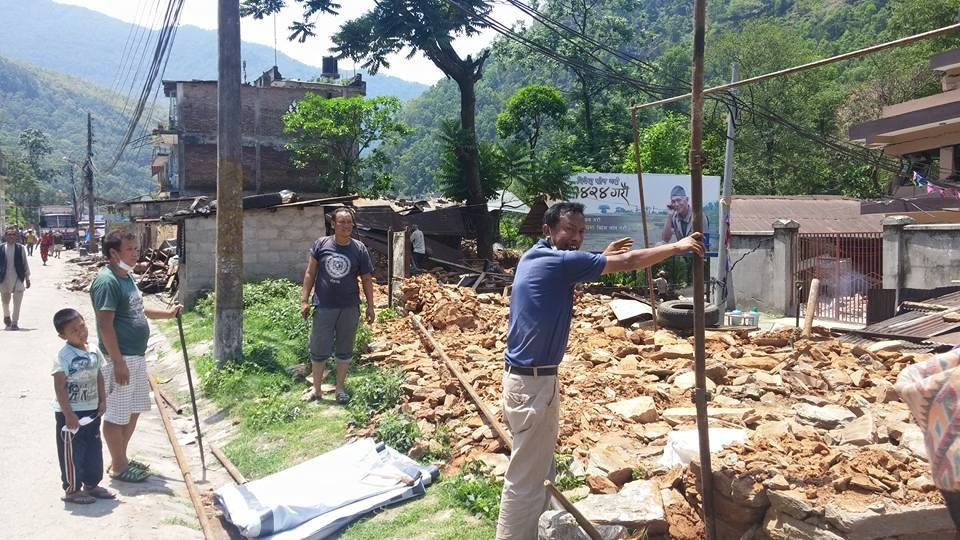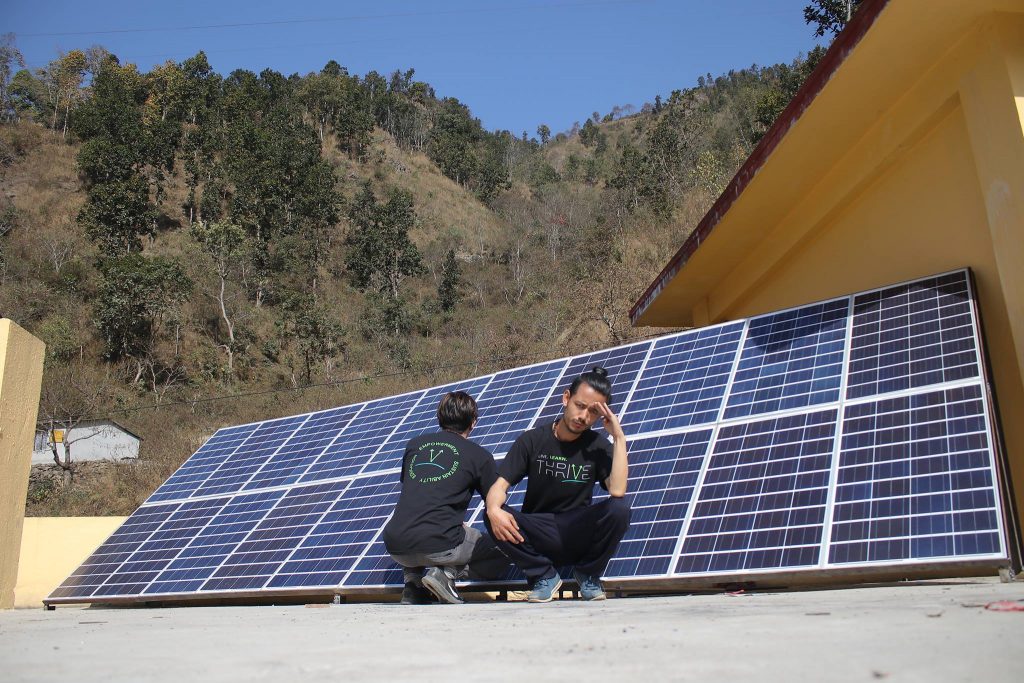Thrive Projects: Three years after disaster

Three years ago today, April 25, a devastating earthquake brought unprecedented damage to communities across Nepal, leaving around half a million buildings destroyed and displacing an estimated 2.8 million people. Since then, international aid has poured into the small developing nation from both foreign states and NGOs, totaling around 4.1 billion dollars.
Despite this, reconstruction has been slow. As of six months ago, only five percent of homes had been rebuilt. The National Reconstruction Agency, the organization tasked with allocating money and overseeing development progress, has blamed the delays on a shortage of skilled workers and a “lack of substantive initiatives among the survivors”, according to the Kathmandu Post.
The international community has raised billions in relief, but for the people of Nepal to successfully recover from the tragedy inflicted on their society, we at Thrive Projects continue to believe that education and knowledge will be of paramount importance. That is why, rather than simply donating money and supplies to the Nepalese government, we have taken an on-the-ground approach to sustainable development of communities in need.
Implementing the vocational training programs SPARK (Solar Powered Auxiliary Relief Kiosk) and FLARE (First-Line Aid, Response and Evaluation), the Thrive team has been able to teach community members how to utilize solar panels, electrical components, and first aid equipment found in their local community. Through work with partners in Nepal – Global Peace Foundation Nepal, All Hands Volunteers, HEAL Nepal, the Lincoln School, and Service for Peace – these programs have already contributed more than 2,000 additional hours of community lighting and augmented the wellness of more than 14 schools and communities..

With both SPARK and FLARE, 250 students have been exposed to STEM education and basic medical procedures that are not available to many in Nepal. This education has been critical for the empowerment of young people as 8,000 schools were destroyed in the 2015 earthquake, according to Plan International.
Knowledge of first aid and electrical sustainability also remain key in this region of the world in order to mitigate the effects of subsequent natural disasters. This was seen first hand by the members of Thrive when a devastating monsoon submerged and marooned thousands of villages in Nepal with catastrophic effect nearly one year ago. Many people were displaced, faced food shortages and rampant disease.
As these disasters remain a threat, addressing the underlying vulnerabilities of the people of Nepal will continue to be essential to the approach of Thrive, and with the support of our donors and partners, we can continue to work towards a comprehensive and inclusive recovery for all Nepalis.
2,227 total views, 2 views today

Leave a Reply